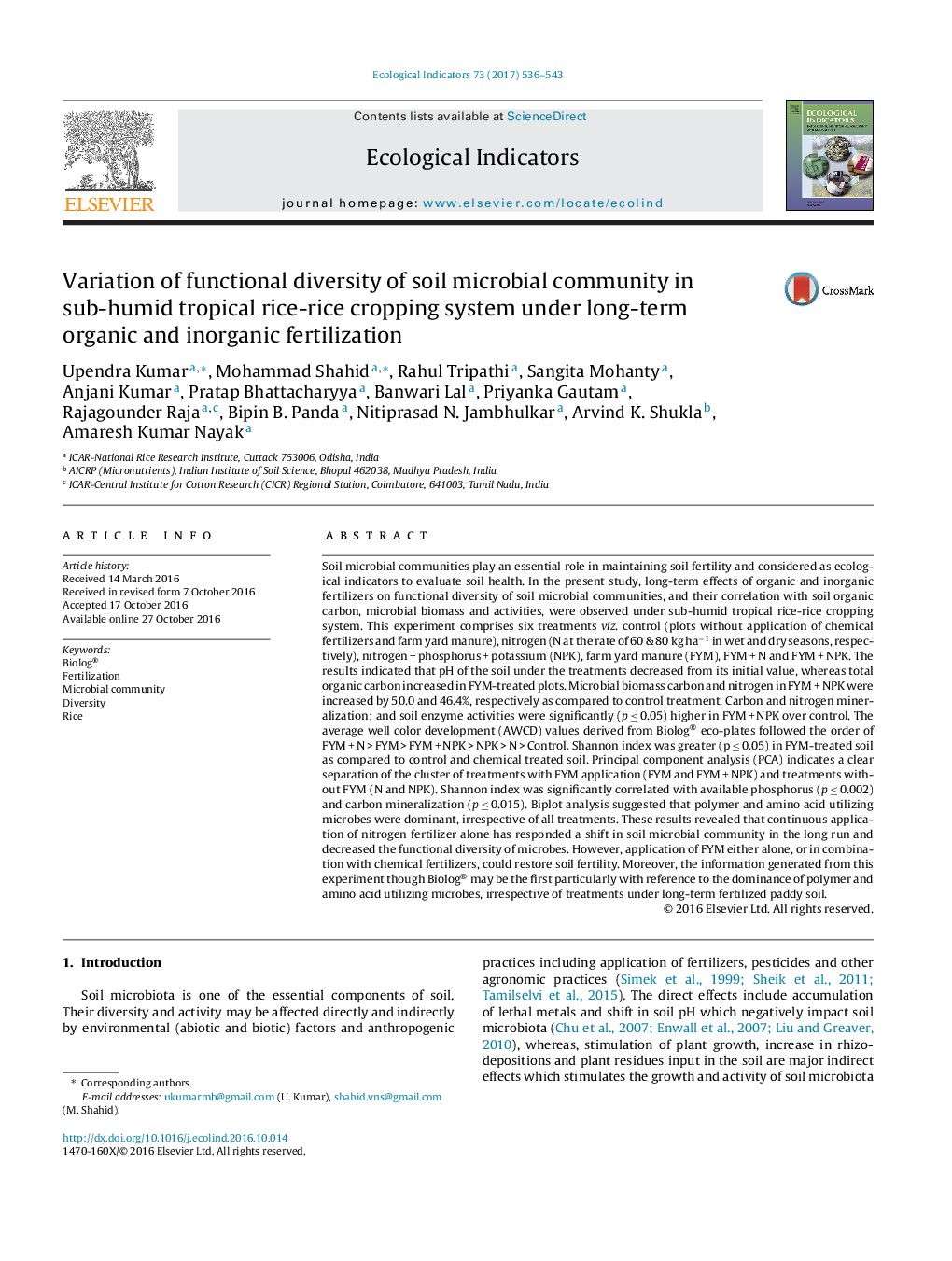| کد مقاله | کد نشریه | سال انتشار | مقاله انگلیسی | نسخه تمام متن |
|---|---|---|---|---|
| 6292639 | 1617129 | 2017 | 8 صفحه PDF | دانلود رایگان |
- Soil microbial dynamics were evaluated after 41 years of variable fertilization in rice.
- Nitrogen application without manure, limits the soil microbial biomass and activities.
- Functional soil microbial community increased with application of nitrogen with manure.
- Diversity index showed a positive correlation with soil carbon mineralisation.
- Amino acid and polymer utilizing microbes were dominant, irrespective of treatments.
Soil microbial communities play an essential role in maintaining soil fertility and considered as ecological indicators to evaluate soil health. In the present study, long-term effects of organic and inorganic fertilizers on functional diversity of soil microbial communities, and their correlation with soil organic carbon, microbial biomass and activities, were observed under sub-humid tropical rice-rice cropping system. This experiment comprises six treatments viz. control (plots without application of chemical fertilizers and farm yard manure), nitrogen (N at the rate of 60 & 80 kg haâ1 in wet and dry seasons, respectively), nitrogen + phosphorus + potassium (NPK), farm yard manure (FYM), FYM + N and FYM + NPK. The results indicated that pH of the soil under the treatments decreased from its initial value, whereas total organic carbon increased in FYM-treated plots. Microbial biomass carbon and nitrogen in FYM + NPK were increased by 50.0 and 46.4%, respectively as compared to control treatment. Carbon and nitrogen mineralization; and soil enzyme activities were significantly (p â¤Â 0.05) higher in FYM + NPK over control. The average well color development (AWCD) values derived from Biolog® eco-plates followed the order of FYM + N > FYM > FYM + NPK > NPK > N > Control. Shannon index was greater (p â¤Â 0.05) in FYM-treated soil as compared to control and chemical treated soil. Principal component analysis (PCA) indicates a clear separation of the cluster of treatments with FYM application (FYM and FYM + NPK) and treatments without FYM (N and NPK). Shannon index was significantly correlated with available phosphorus (p â¤Â 0.002) and carbon mineralization (p â¤Â 0.015). Biplot analysis suggested that polymer and amino acid utilizing microbes were dominant, irrespective of all treatments. These results revealed that continuous application of nitrogen fertilizer alone has responded a shift in soil microbial community in the long run and decreased the functional diversity of microbes. However, application of FYM either alone, or in combination with chemical fertilizers, could restore soil fertility. Moreover, the information generated from this experiment though Biolog® may be the first particularly with reference to the dominance of polymer and amino acid utilizing microbes, irrespective of treatments under long-term fertilized paddy soil.
Journal: Ecological Indicators - Volume 73, February 2017, Pages 536-543
